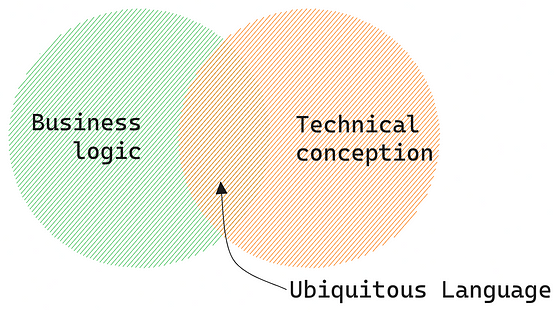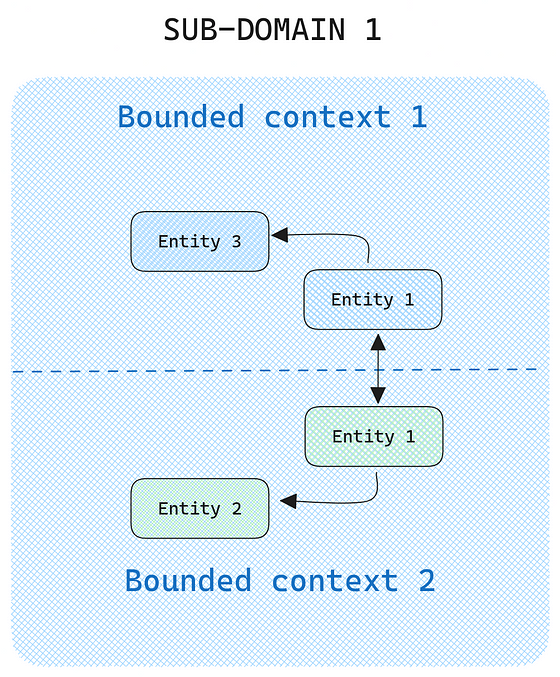Architecture Approach: Domain-Driven Design (DDD)
Domain-Driven Design: A deep dive into aligning complex software with business needs through strategic modeling and continuous refinement.
Join the DZone community and get the full member experience.
Join For FreeWhat Is Domain-Driven Design (DDD)?
DDD is a software development approach that focuses on aligning complex software designs with business needs. It advocates for a deep connection between the implementation and the core business concepts. This alignment is achieved through several key concepts that guide the design and development process.
Key Concepts
Domain: The term “domain” refers to the specific business area or sphere of knowledge and activity around which the software is built. It encompasses the business’s problems, operations, logic, and rules. Understanding the domain is crucial, as the software’s purpose is to address and solve real-world problems within this domain. It may also contain sub-domains.

Domain Logic: Also referred to as "business logic," this encompasses the rules, calculations, and processes that define how data is created, stored, and modified within the application. It’s the heart of the domain model, ensuring that all business rules and norms are correctly implemented and enforced
Ubiquitous Language: This is a common language shared by developers and domain experts. It’s used to describe all aspects of the domain, ensuring that all communication is precise and meaningful.

Bounded Contexts: These are explicit boundaries within which a specific domain model is defined and applicable. Bounded contexts help to minimize misunderstandings and clarify what specific terms mean within different contexts.

Aggregates: An aggregate is a cluster of domain objects (entities and value objects) that can be treated as a single unit. An aggregate has one root entity, known as the aggregate root, which is the only point of interaction for external objects.
Entities and Value Objects: Entities are objects that are defined by their identity, rather than their attributes. Value objects, on the other hand, are defined by their attributes and do not have a conceptual identity. You can refer to the “EvansClassification.”
Domain Events: These are significant business events that trigger transactions and changes within the domain. They represent something important that happened in the domain and are used to communicate changes between different parts of the domain.
Repository Pattern: This pattern provides a way to access domain objects in a manner that abstracts the underlying data storage mechanism. Repositories manage the persistence of entities and typically align with aggregates.
Continuous Refinement: DDD is not a one-time activity but a continuous process of learning and refinement. The understanding of the domain evolves over time, and the software model should be continuously refined to reflect this deeper understanding.
This is not an exhaustive list of DDD concepts, but it will help to understand the basics of the approach, and for a more in-depth look, you might want to buy the book by Eric Evans, Domain-Driven Design: Tackling Complexity in the Heart of Software.
Benefits
Improved Communication: The ubiquitous language and clear context boundaries improve communication between team members and stakeholders. It creates a very important link between technical and business teams that can be game-changing for a new product design that needs to be maintained in time.
It also opens doors to other practices such as BDD (Behavior-Driven Development), which allows teams to improve quality by using the work done in the design phase with the DDD approach.
Enhanced Flexibility: The utilization of bounded contexts and aggregates within DDD enables a notably more adaptive and flexible design approach. Bounded contexts define clear boundaries within the system, allowing different parts of the application to evolve independently and reducing the impact of changes in one area on others. This independence is crucial for large, complex systems where different modules may have distinct requirements and evolution paths.
Aggregates further contribute to this flexibility by encapsulating related entities and value objects, simplifying the model and making each part of the system more manageable and easier to understand. This modular structure not only aids in maintaining a cleaner codebase but also supports diverse technological choices, as different contexts may use different technologies best suited to their specific needs.
Overall, this modular approach inherent in DDD fosters an environment where adaptability and flexibility are central, enabling teams to respond more effectively to changing business requirements and technological landscapes. It fits perfectly with decentralized architectures such as microservices, but could also be implemented in a "modulith."
High Cohesion and Loose Coupling: Within Domain-Driven Design, aggregates ensure high cohesion by grouping closely related entities and value objects. This tight internal grouping enhances the system’s clarity and integrity. Simultaneously, the bounded contexts maintain loose coupling, allowing different parts of the system to interact with minimal dependencies, thereby enhancing flexibility and ease of maintenance.
Trade-offs
Complexity: The detailed modeling inherent in DDD introduces a level of complexity that can make the development process more challenging. This is particularly evident in the nuanced modeling of business logic and the delineation of bounded contexts and aggregates. While this complexity aids in handling intricate business domains, it can be overwhelming for simpler projects where a straightforward approach might suffice.
Time-Consuming: Implementing DDD's concepts, such as establishing a ubiquitous language and continuously refining the model to align with the evolving domain, is a time-intensive endeavor. This aspect makes DDD less suitable for projects with tight deadlines or for domains with straightforward logic that don't require such in-depth analysis. In scenarios where speed is crucial, the lengthy process of DDD can become a hindrance rather than a help.
Skill Requirement: DDD demands a high level of expertise in both software design principles and in-depth knowledge of the business domain. This dual requirement can be a significant challenge for teams lacking experience in these areas. Inexperienced teams might find themselves struggling to effectively implement DDD, leading to extended development times and potentially suboptimal outcomes. Without the necessary skill set, the benefits of DDD can be difficult to realize, turning what is intended as a structured approach into a complex and cumbersome process.
Conclusion
In conclusion, DDD presents a sophisticated and structured approach to software development, particularly well-suited for complex business domains. Its emphasis on a deep understanding of the business domain, through concepts like ubiquitous language, bounded contexts, and aggregates, enables the creation of software that is highly aligned with business needs. The modular nature of DDD fosters enhanced flexibility in design and development, allowing systems to adapt more readily to changes. Additionally, the principles of high cohesion within aggregates and loose coupling between bounded contexts contribute to a more maintainable and scalable architecture.
However, the adoption of DDD is not without its challenges. The complexity inherent in the detailed modeling of business domains, the time required to establish and maintain the numerous concepts of DDD, and the high level of expertise required for effective implementation are significant considerations. These factors can make DDD less suitable for simpler projects or for scenarios with tight timelines and limited resources.
Therefore, while DDD offers a robust approach for tackling complex software projects, its suitability must be evaluated against the specific needs and constraints of each project. For teams with the necessary skills and facing complex business challenges, DDD offers a powerful approach to creating effective, business-centric software solutions. However, for projects with simpler domains, shorter timelines, or less experienced teams, more straightforward methodologies might be more appropriate.
Published at DZone with permission of Pier-Jean MALANDRINO. See the original article here.
Opinions expressed by DZone contributors are their own.

Comments